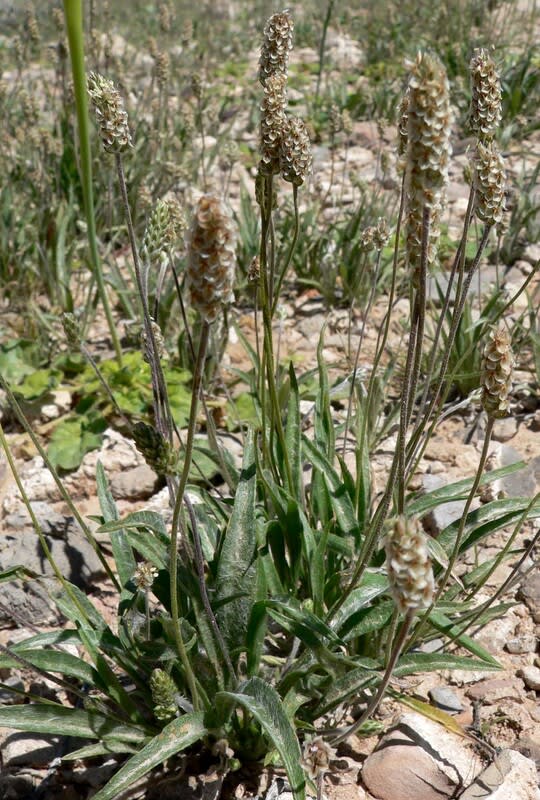Blond Plantain, Desert Indianwheat, Blond Psyllium, Spogel Seeds, Isabgol
Plantago ovata

🌿 Morphology
🌞 Growing conditions
🌍 Origin and family
🌾 Uses
Warning: Despite the care taken in writing this sheet, it is essential to cross-reference sources before using or consuming any plant. When in doubt, consult a qualified professional
Permaculture uses
Primarily used for its seed husks, which are a valuable source of soluble fiber. The husks are edible and have medicinal properties, acting as a bulk-forming laxative, and are often used to treat constipation, irritable bowel syndrome, and high cholesterol. The plant can also be grown as a cover crop to improve soil health and prevent erosion. It is particularly drought-tolerant, making it suitable for arid and semi-arid permaculture systems.
Permapeople description
Plantago ovata, also known as Blond Psyllium, is a plant native to the Mediterranean region and West Asia. It is a source of psyllium husk, a soluble fiber used as a bulk-forming laxative and dietary supplement.
Botanical description
Plantago ovata is an annual herb belonging to the Plantaginaceae family. It is characterized by its basal rosette of linear to lanceolate leaves, typically 10-25 cm long and 0.5-8 mm wide. The plant produces numerous small, white, inconspicuous flowers arranged in dense cylindrical spikes on stalks arising from the base. The fruit is a small capsule containing two ovate, boat-shaped seeds. The seeds are covered with a mucilaginous husk, which swells up when soaked in water. It typically grows to a height of 10-45 cm. The plant thrives in sandy, well-drained soils and requires full sun exposure.
Companion planting
Generally a good neighbor, as it does not have specific allelopathic effects. Compatible with most vegetables and herbs, particularly those that benefit from improved soil structure and moisture retention. Companion planting data specific to Plantago ovata is sparse.
Propagation methods
Propagation is primarily done through seeds. Seeds should be sown in spring or early autumn, directly into well-prepared soil. Seedlings are relatively easy to transplant. Self-seeding is common. No stratification is needed.
History and traditions
Plantago ovata has a long history of use in traditional medicine, particularly in India, where it is known as Isabgol. It has been used for centuries as a natural remedy for digestive ailments, and its medicinal properties are mentioned in ancient Ayurvedic texts. The seeds were historically used as a demulcent, emollient, and diuretic. It has also found application in traditional textile production, as the mucilage extracted from the seeds has served as a sizing agent for yarns and fabrics.
Usage calendar
Sowing: Spring, Autumn. Flowering: Spring to Summer. Harvesting (seeds): Summer. Pruning (deadheading): After flowering.
